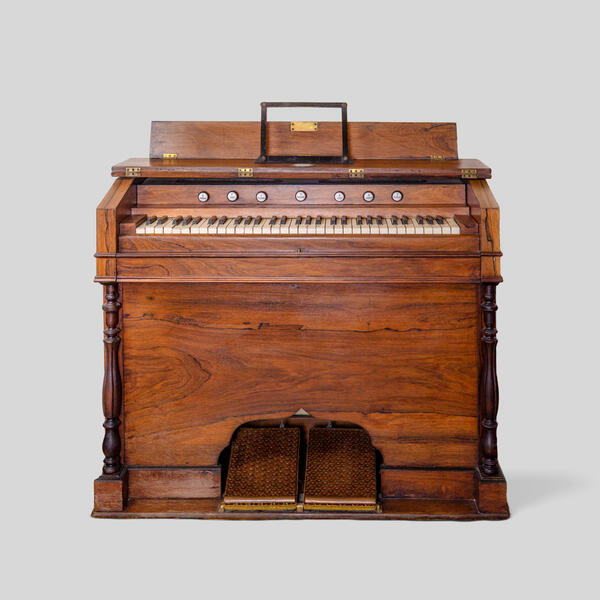The Ivanovo Museum of Local History named after Dmitry Burylin presents one of the most widespread musical instruments of the 19th century — a physharmonica (a reed organ).
Its name came from the Greek words fusa — “blacksmith’s bellows” and armonia — “harmony”. It is a keyboard and air musical instrument. It belongs to the aerophone class of musical instruments. The notes are produced by metal reeds, which are set in motion by air vibrations created by the bellows. To do this, the bellows are worked by the feet by pressing the two wide pedals in an alternate movement.
The history of this musical instrument dates to 1784 and is connected with František Kiršnik — an organ maker from the Czech Republic. During that time, he lived in Saint Petersburg and created a new method of sound production. The name “physharmonica” was introduced in 1818 by a musical master from Vienna Anton Haeckl, who improved the instrument. From the second half of the 19th century, the physharmonica became widely popular throughout Europe. It was especially common among the Germans who settled on the territory of the Russian Empire. The instrument was mainly used for playing music at home as it did not require regular tuning and was more affordable. Famous composers, including Hector Berlioz, wrote music for physharmonicas. Because of the unique sound of the instrument, it was most often used for piano and vocal transcriptions.
Most instruments were imported to Russia from abroad — Germany, France and even America. There were also several small Russian factories and workshops in Saint Petersburg, Kyiv, Moscow and Bolog that produced new physharmonicas and repaired old ones. In the mid-19th century, the French bookseller and music publisher S. Dufour and famous Belgian piano maker Herman Lichtenthal launched the sale of physharmonicas designed by Alexandre Debain in Saint Petersburg. Julius Heinrich Zimmermann was one of the largest suppliers of physharmonicas. In 1883, Zimmermann opened a musical instruments factory in Saint Petersburg, which existed until 1914, where physharmonicas were produced under the brand name Julius Heinrich Zimmermann. They were assembled from ready-made parts, purchased from foreign companies.



